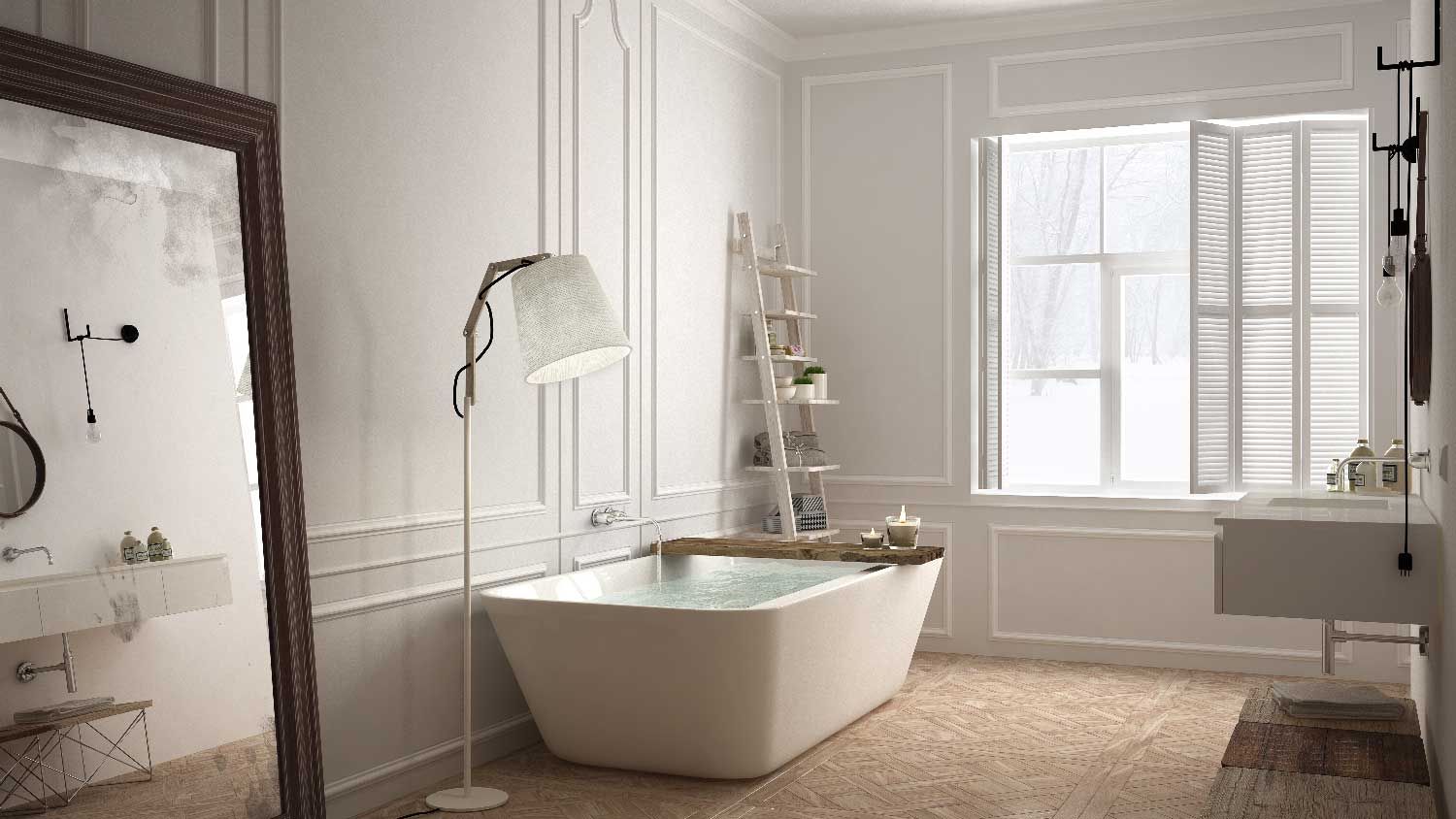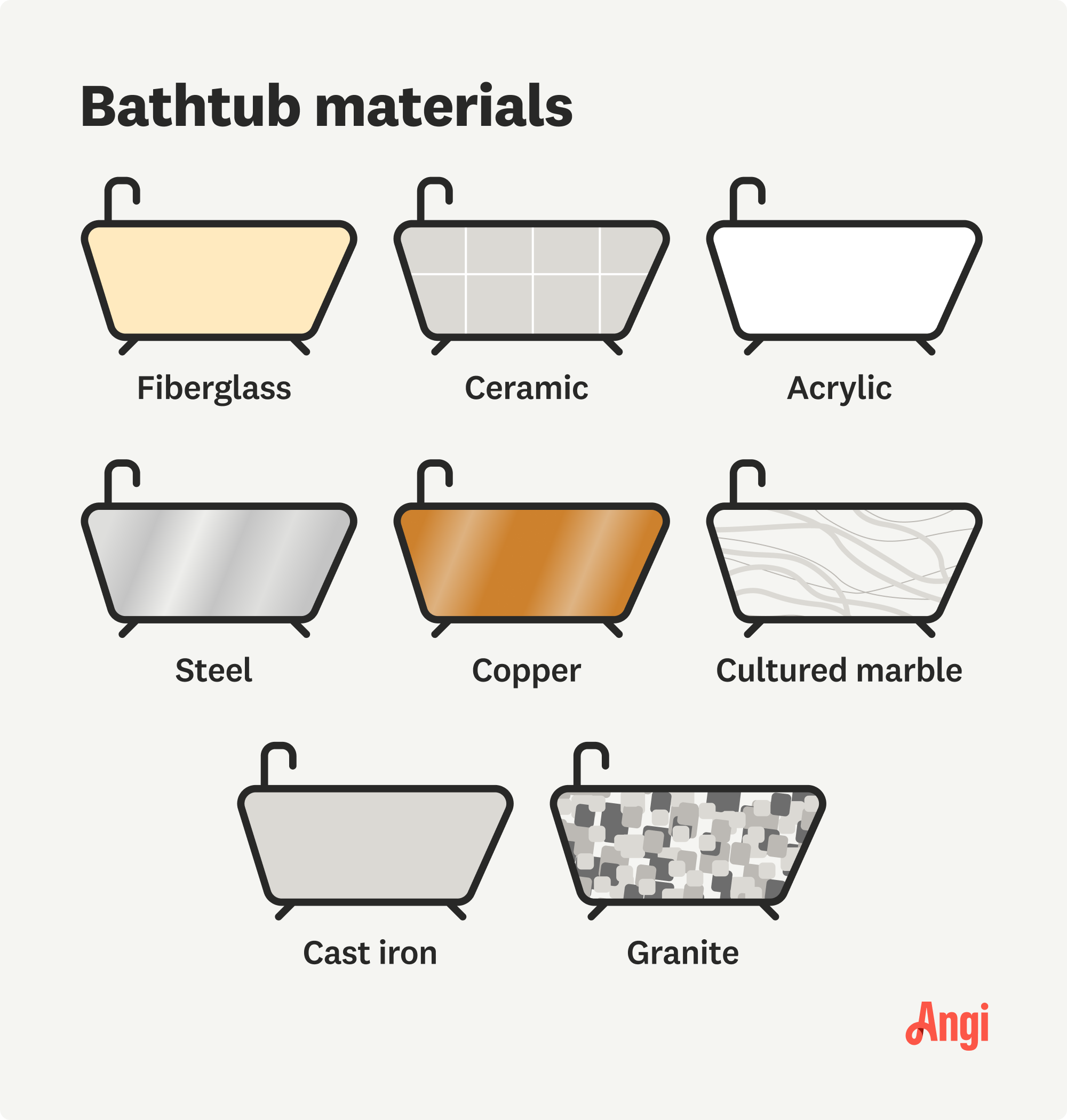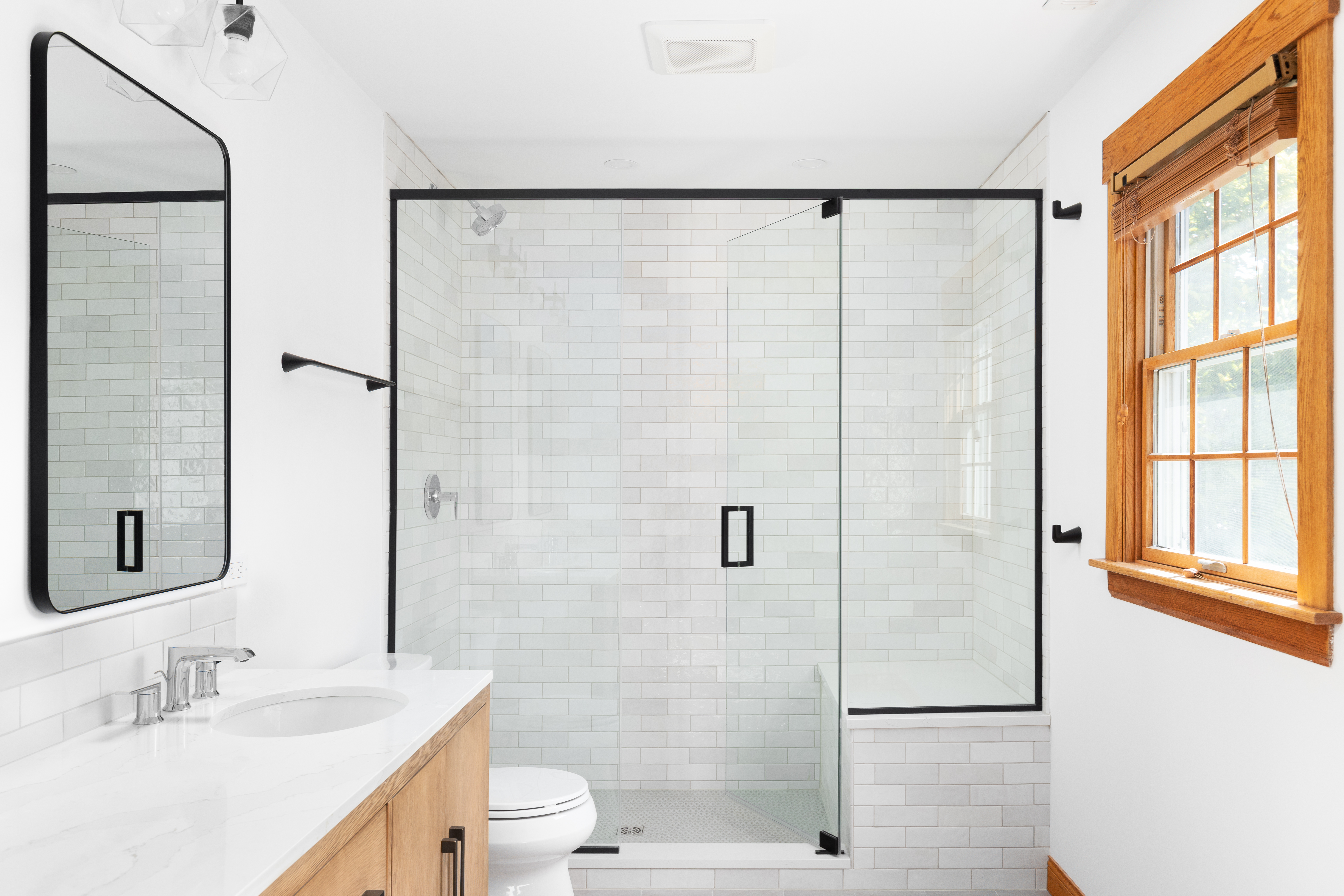
From budget-friendly builds to advanced plans fit for a gourmet chef, the price to build a kitchen can vary. Learn the average kitchen installation cost.
Replacing a bathtub in Minneapolis, MN, costs an average of $699 to $1,515, depending on the materials you choose. A bathtub installation pro can provide a quote for your specific project.


The most budget-friendly bathtub replacement in Minneapolis costs as little as $200 for a fiberglass tub, plus labor and permits.
Bathtub replacement pros in Minneapolis charge $45 to $200 per hour for labor, not including materials and other expenses.
Plumbing permits, with a minimum fee of $85, are required in Minneapolis for bathtub replacement projects.
Budget at least $50 to $300 for the removal and proper disposal of your old tub. Heavier cast-iron tubs cost more to haul away.
Typical bathtub replacement in Minneapolis, Minnesota costs an average of $1,077, with most homeowners paying between $699 and $1,515, depending on material choices and project scope. Winter weather can influence project timing, as frozen pipes and harsh conditions may complicate installations during Minnesota's coldest months. Whether you're upgrading to a soaking tub or replacing an outdated fixture, understanding local cost factors helps you plan a successful bathroom renovation.
From budget-friendly fiberglass to premium granite, material choice makes a big difference in bathtub replacement cost estimates for homeowners in Minneapolis, Minnesota. The size and style of your new tub also matter, as does the complexity of installation. If you're working with an older home built before modern building codes, you might encounter additional expenses for bringing plumbing systems up to current building standards.
Many tub styles balance aesthetics and utility to bring comfort and relaxation. Here’s a look at the average prices for different bathtub types.
| Tub Style | Average Cost |
|---|---|
| Standard | $200–$800 |
| Soaking tub | $600–$13,000 |
| Jet and Whirlpool | $1,000–$4,000 |
| Freestanding | $2,000–$3,000 |
| Walk-in | $4,000–$22,100 |
| Accessible | $4,000–$12,000 |
| Clawfoot | $10,000+ |
A standard bathtub is one of the least expensive options, with costs ranging from $200 to $800, depending on the tub material. General-purpose tubs are rectangular or oval-shaped and have a showerhead above. You may also need to install a surround for an additional $500 to $2,000.
Deep-basin soaking tub costs range from $600 to $13,000. Like other styles, the price of soaking tubs is mainly determined by material and size. Because these are deeper than standard tubs, confirm that the tub will fit your space before purchasing.
Bathtubs with jets help soothe stiff muscles and sore joints. The average Whirlpool-style tub costs $1,000 to $4,000, and these come in a variety of shapes and sizes to fit your needs. Jets require electricity, so additional work is required to install these tubs, which means higher labor costs and possibly a more substantial remodel.
Freestanding bathtubs have space to move around on all sides. They make for a distinctive element to your bathroom, especially if you’re accustomed to traditional built-in tubs. Freestanding tubs average $2,500, but ensure you have enough space before committing.
Walk-in tubs offer safety and comfort features, including a door, and allow for easier access for older adults and people with disabilities. They cost between $4,000 and $22,100 and can increase your home’s value.
While walk-in tubs offer one form of accessibility, accessible bathtubs can offer more features (including walk or slide-in functions). Most accessible bathtubs are larger and may include a wider, sometimes motorized, entryway. The cost of accessible bathtubs ranges from $4,000 to $12,000.
Distinctive clawfoot tubs can cost $10,000 or more, but you can find options that fit just about any price range. Depending on the material used, the job may require flooring reinforcement.

The bathtub material you choose is a major factor in how much it costs to replace a bathtub.
| Material | Average Cost | Pros | Cons |
|---|---|---|---|
| Fiberglass | $200–$1,000 | Lightweight; affordable | Doesn’t retain heat |
| Ceramic | $5,000–$10,000 | Unique design | Can chip |
| Acrylic | $700–$1,000 | Lightweight; durable | Discoloration |
| Steel | $200–$1,000 | Lighter than cast iron | Loud; can chip |
| Copper | $2,000–$5,000 | Durable; mold-resistant | More costly |
| Cultured marble | $2,000–$5,000 | Stylish | Heavy; can crack |
| Cast iron | $400–$14,000 | Durable | Heavy |
| Granite | $10,000–$20,000 | Aesthetic | Heavy; difficult to install |
Fiberglass tubs are an affordable option. They’re lightweight and come in a variety of colors. You'll pay between $200 and $1,000 to install a new fiberglass bathtub. Unlike some other materials, fiberglass is not great at retaining heat.
Adding a ceramic tub to your bathroom costs anywhere from $5,000 to $10,000, with prices varying based on the colors and styles of ceramic tile you choose. Ceramic tubs offer unique bathtub design choices, but you will have to clean the grout and repair chips.
Acrylic is a popular material for families due to its resistance to bath toys and dog paws. Standard acrylic tubs cost $700 to $1,000, with high-end models approaching $14,000. Opt for acrylic for a lightweight, durable bathtub option.
Enameled steel is a lighter and more cost-efficient alternative to cast iron, with a price range of $200 to $1,000. However, steel drawbacks include the risk of chipping, and they can make a cacophony of sounds while filling.
Copper bathtubs cost $2,000 to $5,000. In addition to its chic appearance, copper is a durable, long-lasting material that’s resistant to mold and bacteria. This material also holds heat well, making it ideal for long, hot baths.
Stylish marble makes for a show-stopping bathroom. Installing a marble tub will run between $2,000 and $5,000. Unlike acrylic, marble is heavy and susceptible to cracks. Ask your pro about extra care and reinforced flooring when you opt for marble.
Porcelain enamel-coated cast-iron tubs come in a range of styles to fit your dream bathroom. They retain heat well, but cast iron is heavy and may require extra reinforcements. Cast-iron bathtubs cost between $400 and $14,000.
The best part of a cast iron tub is the lack of noise and high rigidity. There’s no flex or anything like that.
If you want a bathtub that doubles as modern decor, you can install a granite tub for $10,000 to $20,000. This material is incredibly durable and long-lasting, but can be heavy and difficult to install.
Removing the old tub and inserting the new one isn’t always as easy as it sounds, and there are plenty of additional costs.
| Additional Projects | Average Cost |
|---|---|
| Tub removal and disposal | $50–$300+ |
| Shower-to-tub conversion | $2,000–$10,500 |
| Subfloor prep and reinforcement | $300–$800 |
| Surround | $500–$2,000 |
| Bath liner | $2,700–$10,000 |
| Faucets | $50–$900 |
| Electrical upgrades | $1,600 |
| Water damage repairs | $450–$14,000 |
The cost to remove and dispose of an old bathtub depends on its type. Fiberglass tubs, which are lighter in weight, cost $50 to $100 to remove. Hauling away a heavy cast-iron bathtub could cost $300 or more.
Converting a shower into a bathtub costs $2,000 to $10,500, similar to how much a tub-to-shower conversion costs. You’ll need to remove the shower—and since tubs are larger than showers—you might have to remove walls, relocate plumbing, or move electrical wiring to make room for a tub.
Heavy tubs need structural support underneath, which can cost $300 to $800. Repairing floor joists costs $4,000 to over $12,000, depending on the condition of the existing floor joists. The cost of subfloor replacement due to damage under your old tub is $3 to $10 per square foot, but your bathroom remodeling project may not require it.
Installing a bathtub surround costs $500 to $2,000. For bathtub-shower combos, you’ll want to install a surround consisting of waterproof panels to protect the drywall from shower water.
Bath liners cost $6,400 on average, but they range from $2,700 to over $10,000, depending on the size of your existing tub. A bath liner is a customized acrylic layer that fits over an existing tub to give it a new look and feel.
Adding a new faucet or other bathtub hardware costs an average of $50 for basic options to over $900 for hardware made from copper or porcelain. You can spend over $700 for high-end faucets, like waterfall or spa-style faucets.
Upgrades to an electrical panel cost $1,600 on average. You may also need to upgrade or add electrical wiring to your bathroom. This may be necessary if you install a jetted or Whirlpool-style bathtub or a tub with high-tech features, like lighting or speakers. If you’re adding a jetted tub, you’ll need a ground fault circuit interrupter (GFCI), which costs an average of $210 to install.
When you take out the old tub or shower, you may encounter water damage in the floors or walls. Water damage restoration costs an average of $3,850. Smaller cases cost as little as $450, while extensive damage and repairs can cost over $14,000. The cost to demo a bathroom can be significant with major water damage.
Depending on its condition and your preferences, you may choose to refinish or replace a bathtub. Refinishing involves sanding the tub and coating it with primer and paint to remove any small dents or scratches and give it a clean and fresh appearance. Bathroom contractors can complete the refinishing process in a day, and it costs an average of $480.
If your bathtub is severely damaged or has major leak issues, it might not be in good enough shape to refinish, making bathtub replacement a better option. If leaks have damaged the flooring or surrounding wall, you’ll need to make repairs and remove mold. Depending on the new tub, you might need to reroute plumbing to make the bathtub replacement work. Bathtub replacement is another job for a qualified bathroom contractor and possibly an electrician or plumber.
Hiring qualified professionals for your Minneapolis bathtub replacement ensures the job meets local code requirements and protects your investment. When deciding on who to hire for a bathroom remodel, recognize that skilled plumbers in the Twin Cities command higher rates than less experienced contractors.
Plumbers and bathtub installers in Minneapolis charge between $45 and $200 per hour, with a labor cost to replace a bathtub averaging between $100 and $2,000. Projects requiring extensive plumbing modifications, moving water lines, or installing heavy tubs like cast iron push costs toward the higher end.
If you’re installing a different type of tub than the existing one or placing the new one in a different spot, you might need some plumbing work. Budget $400 to $1,900 to move plumbing lines and pipes.
The City of Minneapolis requires a plumbing permit when you replace or install fixtures, including sinks, showers, and bathtubs. Building permits cost about $100 to $500 for plumbing work, with a minimum fee of $85, including a $1 state surcharge. If your project involves electrical work for jetted tubs, you'll need separate permits for that aspect of the job.
Ask your contractors about the necessary permits, and don’t start work until you secure them, even if you’re DIYing.
Minnesota's harsh winter conditions present unique challenges for bathroom remodeling projects. While indoor work isn't directly affected by snow and cold, frozen ground can complicate any exterior plumbing connections or drain line work. Material delivery delays may occur during winter storms that affect transportation.
Many Minneapolis homeowners schedule bathtub replacements for late spring through fall when contractor availability is higher and material shipments are more reliable. Planning your project for warmer months can help avoid weather-related delays, dodge added emergency plumbing costs, and ensure smoother completion timelines.
For a midrange update, Minneapolis homeowners typically recoup 65% to 75% of their bathroom remodel cost at resale. This may include new fixtures, cosmetic changes, and possible plumbing upgrades. A target tub replacement on its own may improve saleability but provide a lower return on investment (ROI) than a full midrange remodel.
First-time homebuyers and move-up buyers in the Twin Cities metro area prioritize functional, modern bathrooms with updated fixtures. Replacing a cracked, stained, or outdated tub instantly improves your bathroom's appearance and functionality, making your home more competitive when it hits the market.
Minneapolis buyers appreciate practical upgrades that balance style with longevity, especially given the region's climate demands on plumbing systems.
Home is the most important place on earth, which is why Angi has helped more than 150 million homeowners transform their houses into homes they adore. To help homeowners with their next project, Angi provides readers with the most accurate cost data and upholds strict editorial standards. We survey real Angi customers about their project costs to develop the pricing data you see, so you can make the best decisions for you and your home. We pair this data with research from reputable sources, including the U.S. Bureau of Labor Statistics, academic journals, market studies, and interviews with industry experts—all to ensure our prices reflect real-world projects.
Want to help us improve our cost data? Send us a recent project quote to [email protected]. Quotes and personal information will not be shared publicly.
From average costs to expert advice, get all the answers you need to get your job done.

From budget-friendly builds to advanced plans fit for a gourmet chef, the price to build a kitchen can vary. Learn the average kitchen installation cost.

Building a laundry room addition to your home adds value and functionality. Your laundry room addition cost will depend on size, materials, and other factors.

Small kitchen remodels cost $12,750 on average, depending on the materials, size, labor, and more. Read this to calculate your kitchen remodel costs.

If your shower door has been acting up, it’s time to get it back in working order. You can adjust a shower door with some common adjustments.

Planning a home renovation? Here’s how to avoid common house remodeling mistakes, so you can enjoy a picture-perfect home and save money in the long run.

Learning how to remodel a house on a budget involves prioritizing projects and figuring out how much of the work you can do yourself to save on labor costs.